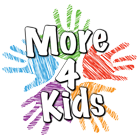Before starting to read a book, discuss the cover with your child and the name of the author. Ask your child to predict what might happen in the book. Preview the characters your child will be reading about and briefly summarize the plot for him/her. Previewing gives the child a “head start” in understanding the content.
Use of Restatement as a Reading Comprehension Technique
Benjamin Behr’s eyes were closed, but he was not sleeping. Beside him, in window seat 15A of the big jet, his twin sister Bridget slept restlessly. Her long, pale hair was tangled and she moaned softly, as her head fell to one side. Benjamin’s throat hurt and his chest ached from trying to hold back tears. He wanted to sleep, but many questions were running through his mind.
Have your 8-year-old child read the title. Ask him to predict what the book is going to be about. He responds by saying it’s about twins in a forest. He reads the chapter title and says, “They’re leaving Florida.” You help him find Florida on a map and explain that it is a state in the southern part of the United States of America. The child reads the first sentence and says, “The boy, Benjamin, is resting, but not sleeping.” He reads the next sentence and says, “He’s on a plane with his twin sister, Bridget.” You ask, “What kind of plane?” “How is Bridget sleeping?” “Restlessly.” “What does restless mean?” “Tossing and turning,” he replies. “Why do you think she’s restless?” He answers. He reads the next sentence and describes Bridget’s hair as long and tangled. You ask what “pale” means and help him look up the word in a dictionary. Your child reads the next two sentences and you draw from him a restatement of the facts and discuss why Benjamin might be ready to cry and what questions might be running through his mind.
The purpose of restatement is to help your child re-phrase what is happening, understand the words, understand the facts, and verbalize the concepts as presented in the written material. If there are pictures, ask questions about them. When the child has restated the entire page, sentence by sentence, have him reread it aloud. Add any words he stumbles on to his dictionary and word cards. Use this technique for every sentence in the book.
Comprehension Skills
Some teachers feel restatement is a bit tedious, but it is a powerful way to teach reading comprehension. It is fine to allow the child to read other materials strictly for enjoyment without using the restatement technique on every sentence, but, when you formally teach reading, use it to build comprehension skills and teach higher level thinking!
Bio for Ann Bowers
Ann Bowers has been an elementary school teacher, in kindergarten through 8th grade, for 20 years. She was a Bilingual Education Grant Project Coordinator for seven years and a school principal for seven. She has a B.A. in English, an M.A. in Education, and holds California Life Teaching Credentials and specialist credentials in Remedial Reading and Teaching English as a Second Language. She is retired and has started a second career as a freelance writer.












Add Comment